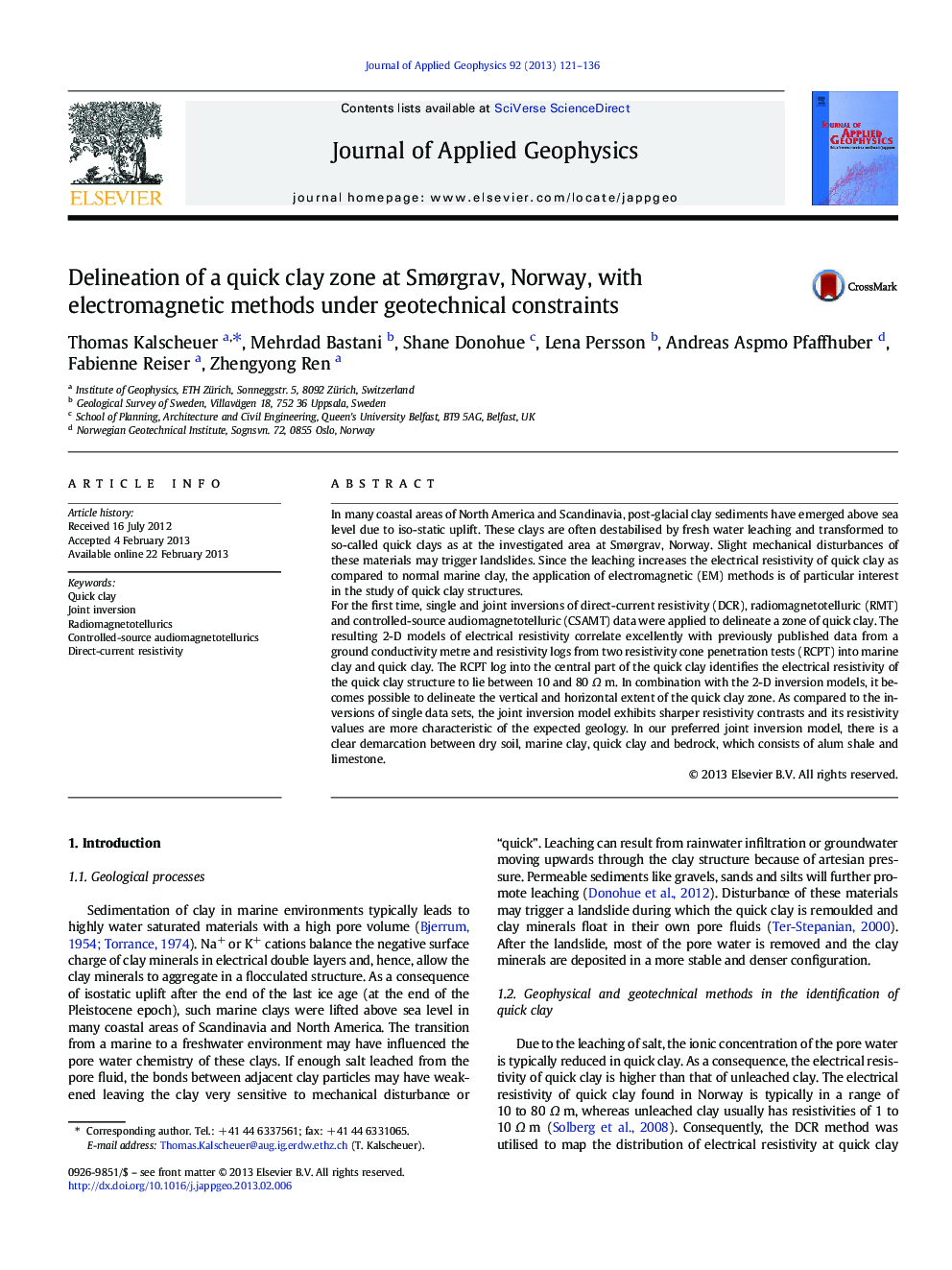| Article ID | Journal | Published Year | Pages | File Type |
|---|---|---|---|---|
| 4740402 | Journal of Applied Geophysics | 2013 | 16 Pages |
In many coastal areas of North America and Scandinavia, post-glacial clay sediments have emerged above sea level due to iso-static uplift. These clays are often destabilised by fresh water leaching and transformed to so-called quick clays as at the investigated area at Smørgrav, Norway. Slight mechanical disturbances of these materials may trigger landslides. Since the leaching increases the electrical resistivity of quick clay as compared to normal marine clay, the application of electromagnetic (EM) methods is of particular interest in the study of quick clay structures.For the first time, single and joint inversions of direct-current resistivity (DCR), radiomagnetotelluric (RMT) and controlled-source audiomagnetotelluric (CSAMT) data were applied to delineate a zone of quick clay. The resulting 2-D models of electrical resistivity correlate excellently with previously published data from a ground conductivity metre and resistivity logs from two resistivity cone penetration tests (RCPT) into marine clay and quick clay. The RCPT log into the central part of the quick clay identifies the electrical resistivity of the quick clay structure to lie between 10 and 80 Ω m. In combination with the 2-D inversion models, it becomes possible to delineate the vertical and horizontal extent of the quick clay zone. As compared to the inversions of single data sets, the joint inversion model exhibits sharper resistivity contrasts and its resistivity values are more characteristic of the expected geology. In our preferred joint inversion model, there is a clear demarcation between dry soil, marine clay, quick clay and bedrock, which consists of alum shale and limestone.
► We investigate a quick clay zone at Smorgrav, Norway, with electromagnetic methods. ► Individual and joint 2D inversions of DCR, CSAMT and RMT data are performed. ► The 2D models agree excellently with RCPT borehole logs into marine and quick clay. ► The joint data set has superior constraints for a resistive limestone formation. ► Only the CSAMT fields penetrate into deep bedrock and identify it as alum shale.
